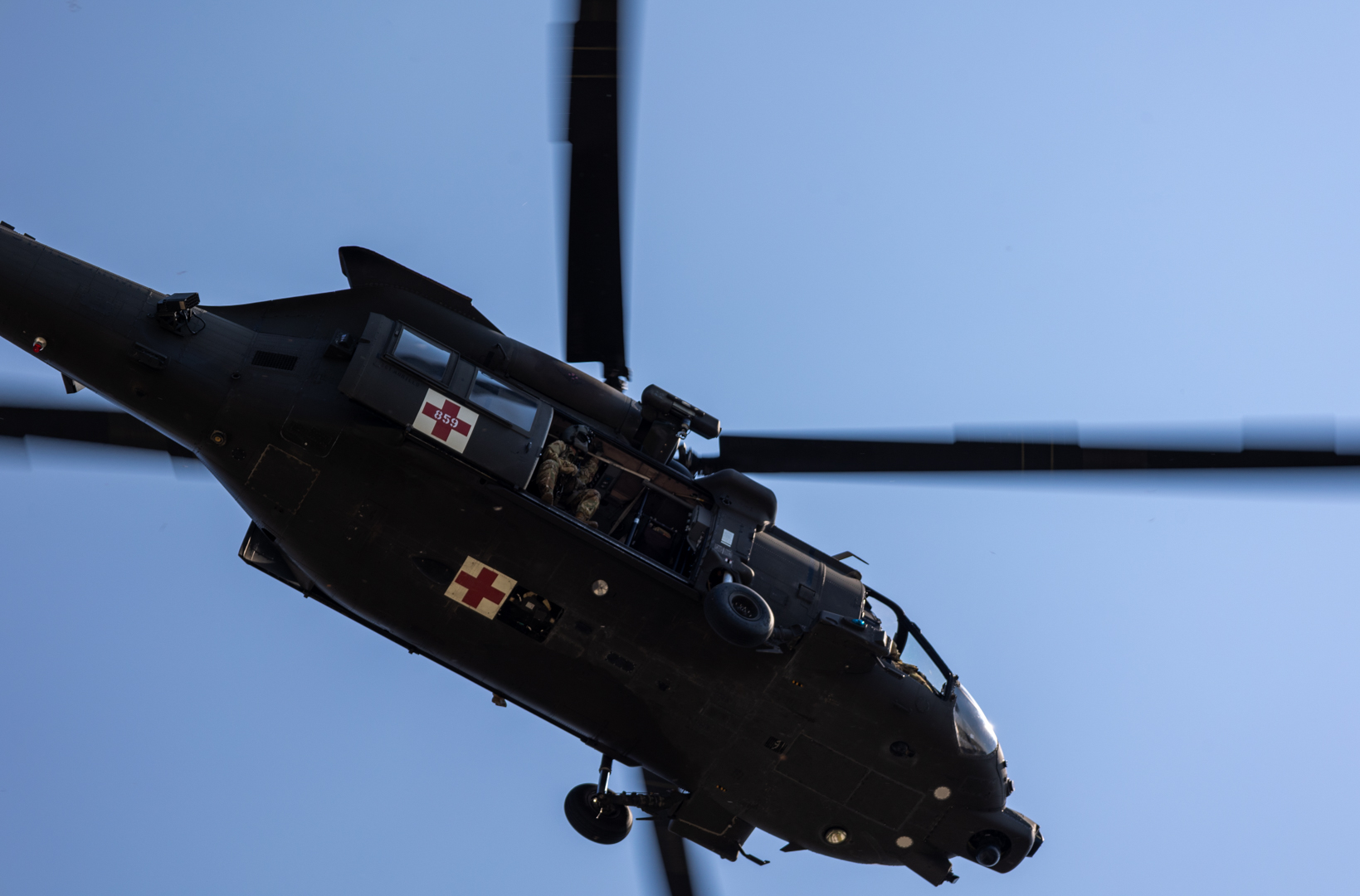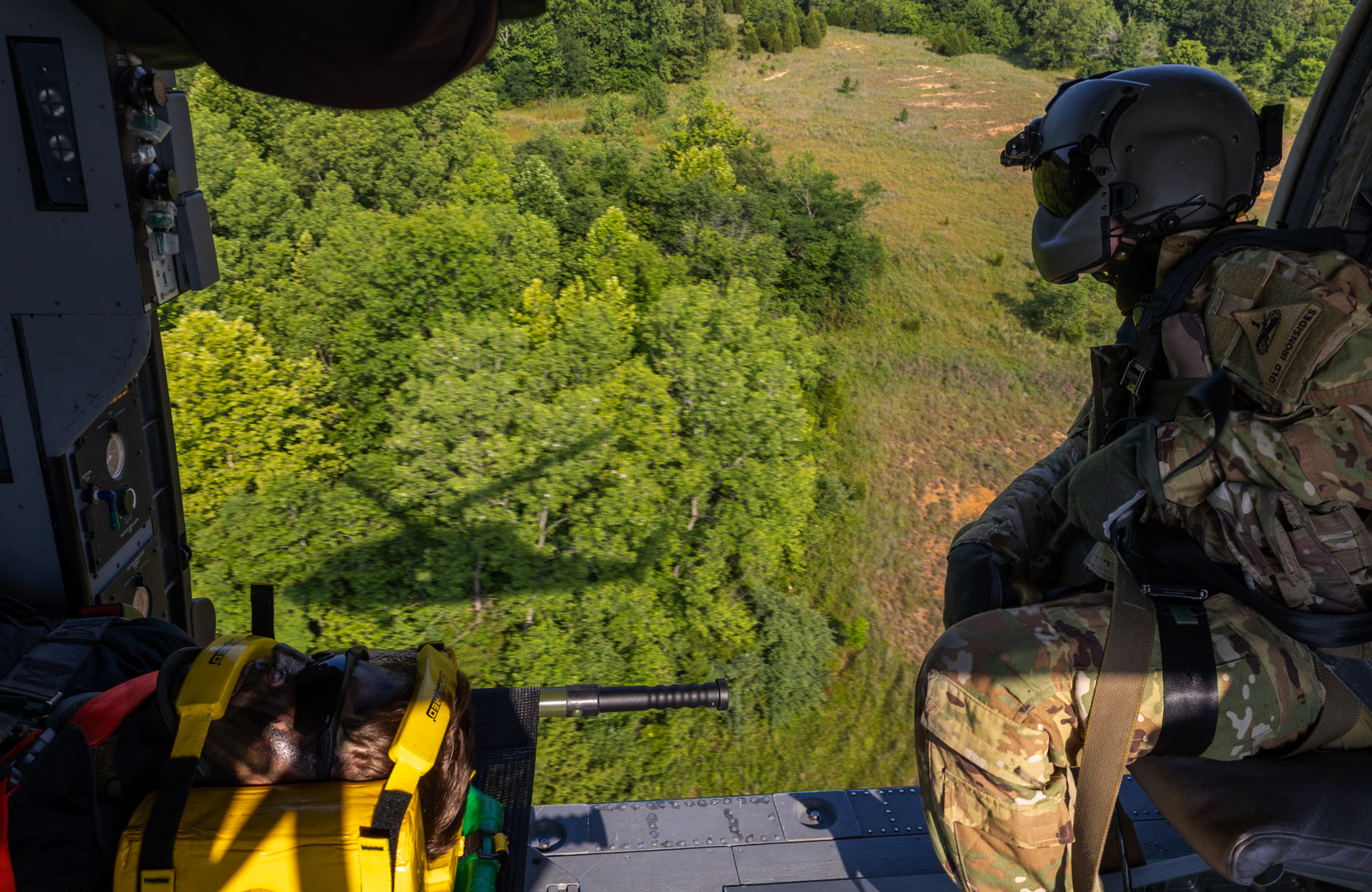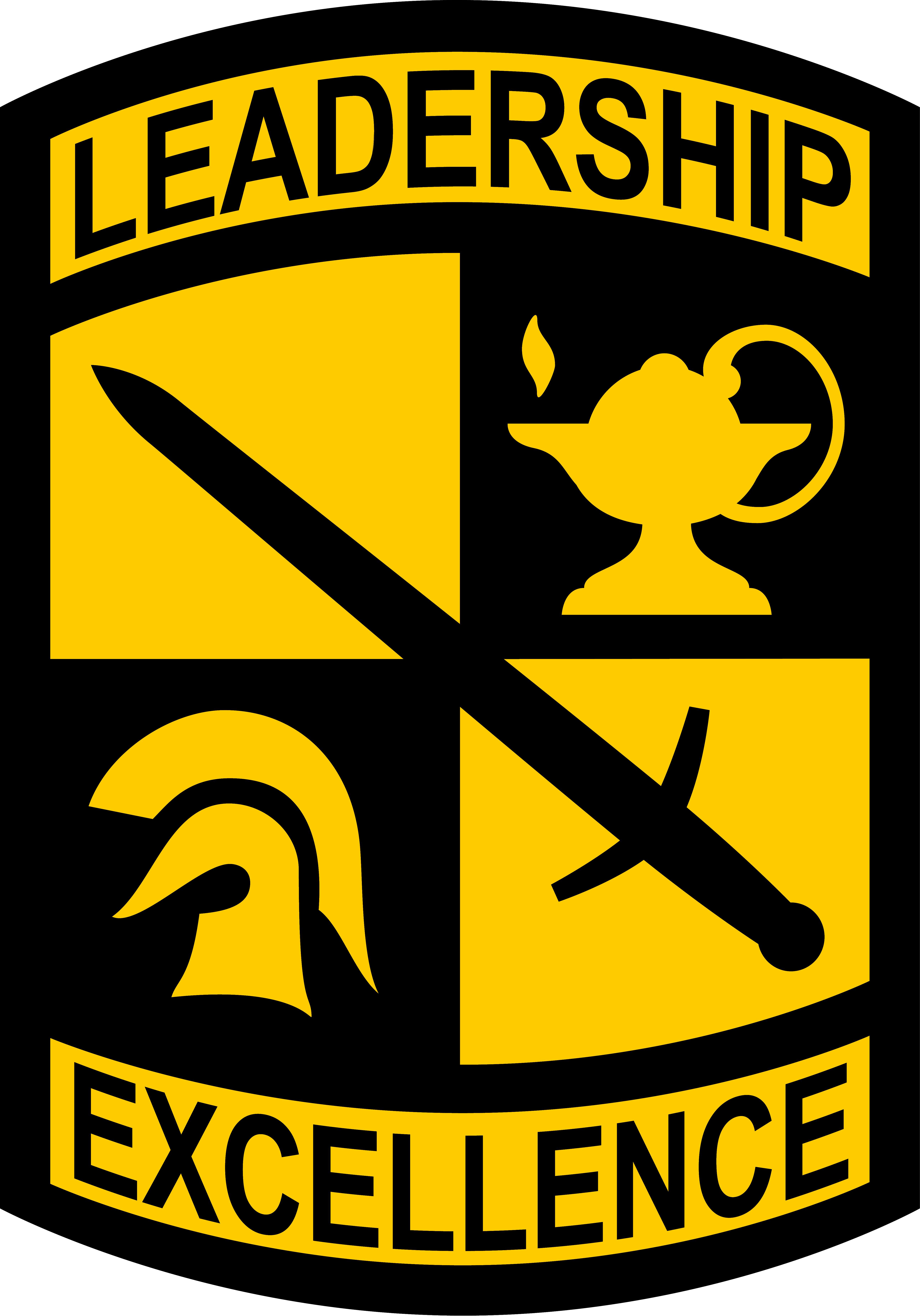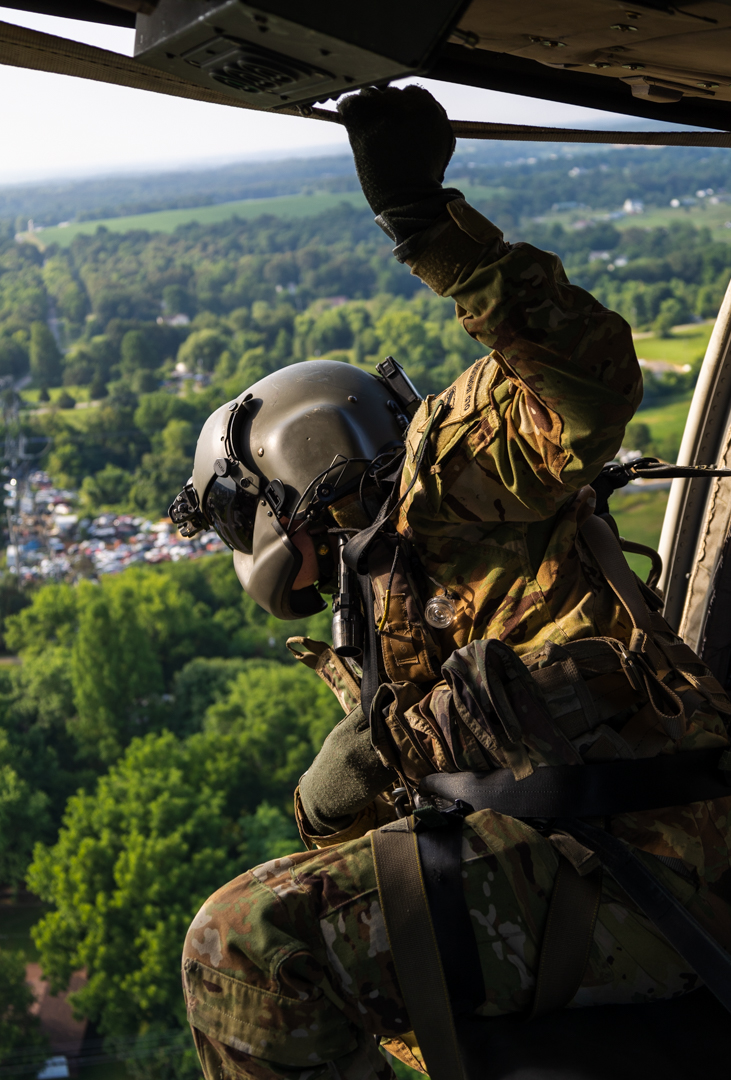
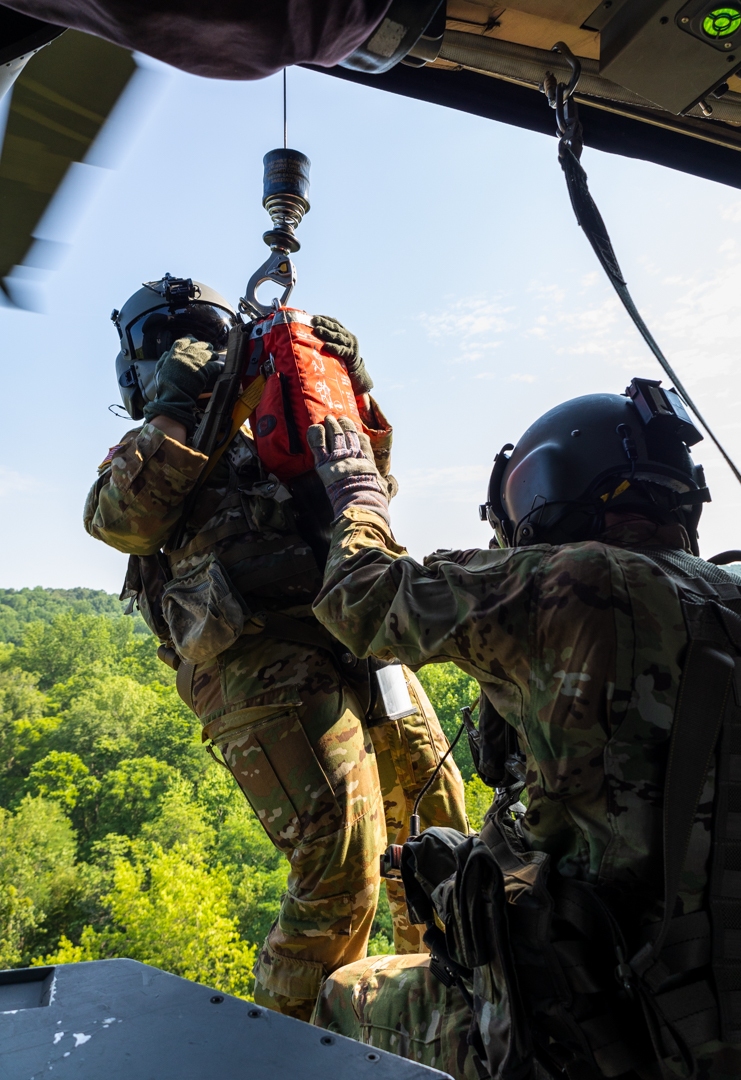
FORT KNOX, KENTUCKY- In the field of medical evacuations, meticulous preparation is crucial. To ensure a perfect execution during real emergencies, medical personnel and their ground support teams engage in practice sessions. These practice runs help resolve potential issues, ensuring everyone knows their role and can perform it efficiently when it counts. Taking flight in a HH-60M “Mike” model Black Hawk helicopters.
Sgt. Mary Kimbrough, Fort Bliss, Flight Medic and her team conduct these exercises in coordination with a ground team. “Today, we focus on practice operations to work out any kinks,” said Kimbrough. “When the real situation occurs, if you’ve made mistakes during practice, you’ve already had the chance to correct them.” This approach is crucial for both the medics and their ground teams.
These sessions are equally vital for ground crews, who need to master calling in nine-line medevac requests, staging patients, and indicating pickup points. This hands-on training, involving staging patients and calling in as if they were medics on the ground, is invaluable. It allows ground medics to simulate real-life scenarios, honing their skills in patient assessment, stabilization, and preparation for transfer. Through these sessions, medics and ground teams refine their processes, improve communication, and ensure seamless coordination, making them better prepared to handle real emergencies efficiently and effectively. In the high-stakes world of medical evacuations, practice truly does make perfect.
Today, Task Force Grizzly conducted a third MEDEVAC rehearsal as part of the Grizzly phase of CST lanes. This exercise involved addressing two points of injury. The first scenario involves a simulated spinal injury, requiring a MEDEVAC to perform a ground evacuation to the area. The second scenario involves a snakebite, prompting a hoist operation using the hoist bucket with MEDEVAC assets to transport the casualty back to Densberger.
The primary objective of this rehearsal is to ensure that all MEDEVAC procedures and protocols are effective for real-world situations. The exercise will test their systems in terms of communication, timing, and coordination between ground vehicles and air assets. By doing so, they aim to validate and refine guidelines and processes from the ground level to the CST top, ensuring a seamless and efficient operation.
Safety is the top priority, and this rehearsal is designed to guarantee that all personnel involved receive prompt and proper care from the dedicated medical team. The successful execution of this MEDEVAC rehearsal will demonstrate the preparedness and capability to handle emergencies, ensuring everyone’s safe return and appropriate medical treatment.
